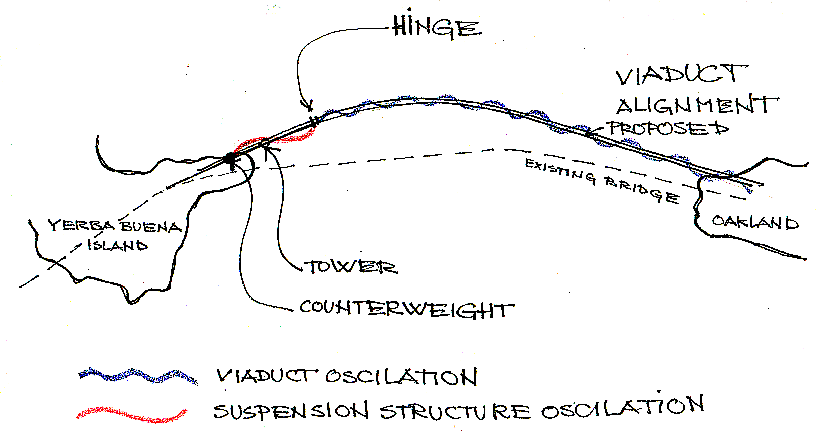
A discussion of some of the many structural problems associated with the proposed Bay Bridge East-Span design
by Daniel Coman

The two dissimilar structures have radically different oscillation behaviors. Since the connecting point is critical for the suspension structure's survivability, additional means are necessary to strengthen the connection, hence more mass. Combined with the mass of the cable anchorage beam, the resulting inertia of the combined masses makes the accuracy of the seismic accelerations estimates (really just an educated guess) critical.
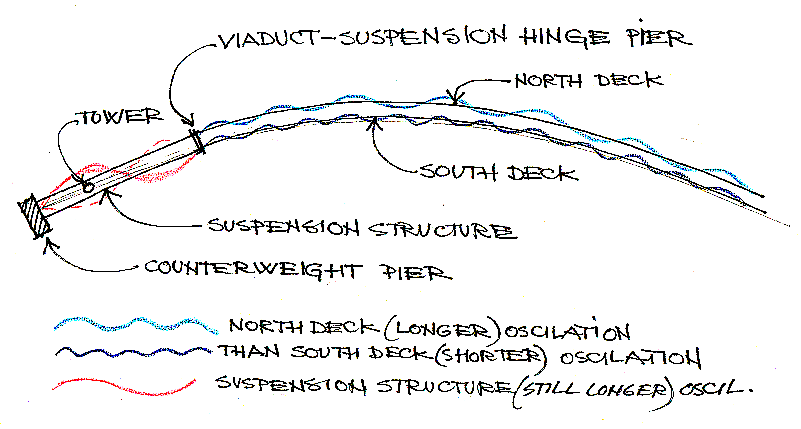
Moreover, since the viaduct consists of twin, curved, parallel structures, the deck to the north is, of course, longer than the one to the south. Accordingly, the two decks will have distinct oscillation periods. To rest the decks on single beams at the piers creates indeterminancies, or complex time-dependent behaviors. The resultant forces, including amplified combined shock waves formed by interference are difficult, perhaps impossible, to predict without physical testing. Thus, the survivability of the critical suspension-viaduct hinge is questionable, or at best a hope based on optimistic assumptions and approximations.
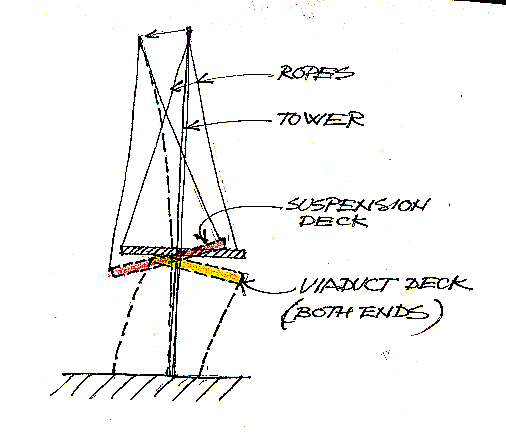
In view of the above (oscillation patterns), there is the distinct possibility—one should say certainty—that the situation will arise where the suspension structure's tower and its anchorage points will sway in opposite directions. This is an extremely dangerous situation, since the twin linked decks will be doubly twisted.
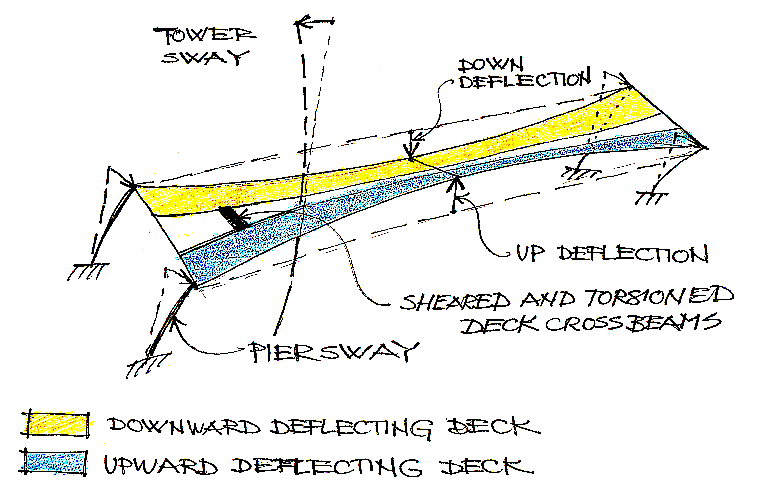
As a result, the longitudinal torsional envelope of the decks will decrease by two-thirds. Furthermore, the cross-connector beams tying the twin decks will be severely torsioned, making another critical point where they are connected to the deck. To be noted here is the fact that, unlike a classic suspension bridge, a self-anchored suspension structure is dependent on its stability on the alignment of its deck, with an extremely low allowable vertical deflection. Thus, the integrity of the ropes suspending the deck from the main cables is another critical aspect of the design. Loss of several ropes would produce deflections in the deck, which would amplify with each seismic upthrust wave.
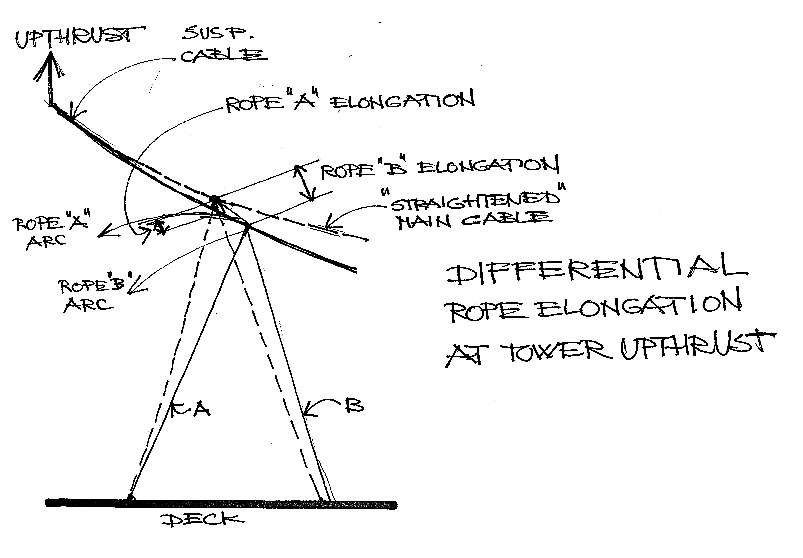
Which brings us to the matter of "Northridge"-type upthrust motions, of accelerations in excess of one gravity. If such an upthrust were to reach the tower of the suspension structure, it would move upwards, straightening the main suspension cables and stretching the ropes. (The great inertia of the deck would prevent it to move with the tower at the same time.) However, the zig-zag pattern of the ropes supporting the deck would load half the ropes several times more than the other half. I do not know whether the suspension structure was computed to survive with only half its ropes, but I seriously doubt it.
There are other even more ominous problems due to upthrust concerning the tower itself that are also critical.
.
home
Seismic equipment "forgotten"
top
.